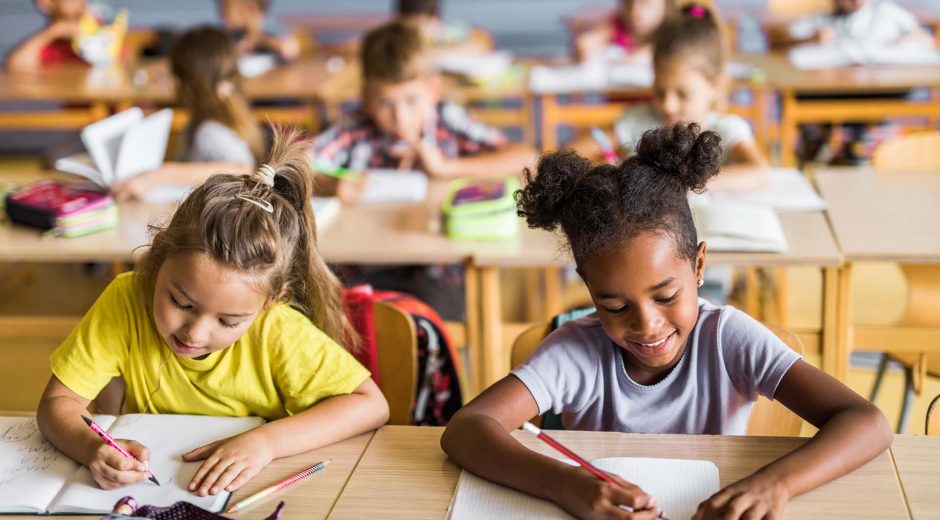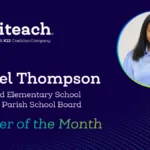Origninally posted by our partner site Learners Edge by Marcee Harris on Jan 26, 2021 7:00:00 AM
If you’re planning lessons for Black History Month, you NEED to read this blog post first! And if you were not planning to teach any lessons for Black History Month, you need to read this blog post, TOO! Black History (and the histories of other marginalized groups) are often thought of as an add-on or a footnote to the historical narratives we learn about in school. But the truth is, the experiences, contributions, and sacrifices of these groups have made our country what it is today. So it is only appropriate that we celebrate and honor this rich history in a way that validates and affirms our students and seeks to build bridges towards rigorous learning and critical thinking. Not sure how to do that? Well, keep reading and we’ll walk you through some dos and don’ts for teaching Black history with a culturally responsive lens.
1. Do: Understand why Black history is important for all students to learn Don’t: Skip teaching about Black history just because you don’t teach black students
Professor Rudine Sims Bishop teaches us, through her mirrors and windows analogy, that young people need to see themselves reflected in the learning they do, but also that learning can act as a window into other worlds. When students are able to read about people, places and cultures beyond their own, they can better empathize with and understand the lived experiences of others. Armed with this new knowledge and context, your students will be better equipped to think critically about the traditional historical narratives they’ve been taught. Zaretta Hammond (author of Culturally Responsive Teaching and the Brain) suggests we help our students explore the following questions: Whose story does our history book tell? What are other versions of this American story we need to include, reframe, or magnify? The resources that follow will give you some ideas for teaching Black history in a way that creates both mirrors and windows for your students. Do: Understand why Black history is important for all students to learn
Don’t: Skip teaching about Black history just because you don’t teach black students
Teaching Resources:
- Why Students Need Black History by Lauren S. Brown
- Black History is American History. We Should Teach It That Way. by Sachel Harris
2. Do: Use the month as a catalyst for change/improvement throughout the year Don’t: Make it a one-time event
Black history IS American history. Instead of being relegated to just one month, educators must find ways to incorporate the history, culture, and contributions of Black Americans into their curriculum throughout the year. Start with a quick audit of your curriculum and ask yourself, “Where and how do Black Americans or the Black experience show up in my curriculum?” Your answer will shed some light on the gaps to be filled. Perhaps you’ll find that Black experience is missing from the literature your students read or maybe you notice that your curriculum only covers enslavement and civil rights. There is so much more of the Black experience to be explored! What about art, music, science, math, government, innovation? Commit to the diversification and expansion of your curriculum with some of these great resources.
Teaching Resources:
- Black History Month: Teaching Beyond Slavery from Teaching Tolerance
- Black History Month Resource Collection from Facing History and Ourselves
- Teaching the Past, Creating the Future: Black History Month Art Lessons by Cindy Ingram
- Search the Collection: National African American History and Culture Museum from the Smithsonian
3. Do: Speak honestly with students about race and justice Don’t: Skim past tough conversations
As you begin to incorporate more Black history, art and culture into your curricular plans, you will find that the topics of race and justice are simply unavoidable. The Black experience since the founding of our country is rooted in violence, oppression, and injustice. It’s important to be “real” with your students of all backgrounds and developmental age groups in order to help them make sense of the complex intersection of race and justice throughout history. Talking about race is challenging, but we must engage in these conversations if we wish to educate our students fully and with a complete history of marginalized groups in America. Below you will find some resources to help you build your capacity to facilitate dialogue with students.
Teaching Resources:
- Tools to Support Anti-Racism by Marcee Harris
- How to Talk “Taboo” Topics with Young Students by Liz Kleinrock
- Let’s Talk!: Discussing Race, Racism and Other Difficult Topics with Students from Teaching Tolerance
One more DO:
Take a course to learn more!
Learners Edge is committed to providing educators with learning opportunities that support professional growth in cultural awareness and culturally responsive teaching strategies. The courses below were written to help you reflect on your thinking, strengthen your knowledge base, and apply what you’ve learned in the classroom:
5128: Creating an Anti-Racist Classroom— In this course, you will explore ways to facilitate productive dialogue around race, identity, inequality, and justice with students (or among colleagues). You will learn anti-biased/anti-racist approaches to classroom instruction and how to ensure equity in the curricular materials you choose.
5119: An Educator’s Guide to Global Thinking and Cultural Competence— Collaborate with others to develop a Global Competence Toolkit, infuse content areas with culturally responsive teaching best practices, and design tools that will help you build your own cultural competence.
5111: Mindsets and Skillsets for a Culturally Responsive Classroom— Start your “journey to responsiveness” with a focus on both the mindset shifts and skills necessary to be a culturally and linguistically responsive educator. Through reflection, exploration, and strategic planning, this course will help educators make the shift to an asset (rather than deficit) approach that fosters positive outcomes for all.
Become a Teacher. Change Lives.
If you are passionate about impacting the world around you there are few places where you can influence the future as much as a teacher. Teachers have the ability to build students up and set them on a positive course that can have a ripple effect for future generations.
If you are interested in becoming a teacher, check out our online teacher certification program and you could be teaching in a matter of weeks.





